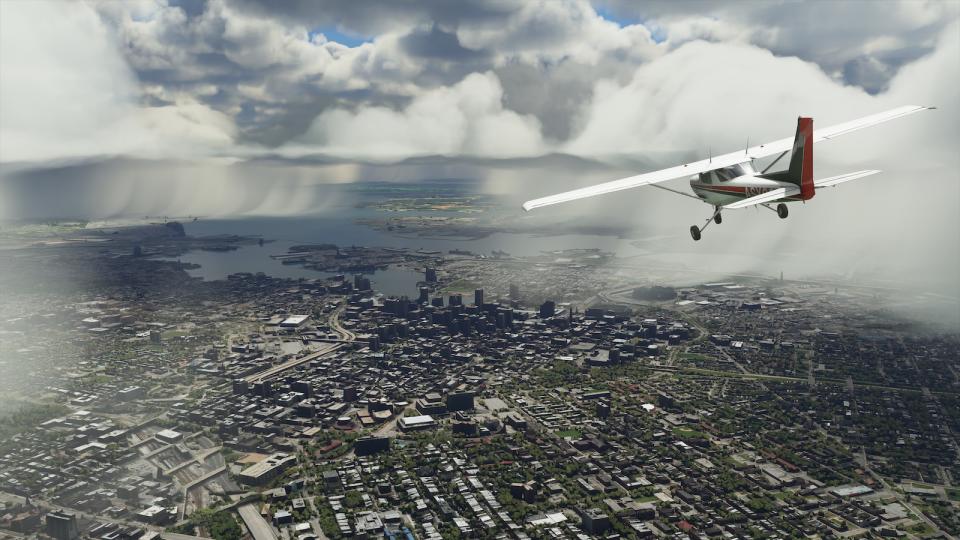'Microsoft Flight Simulator' will support one VR headset this fall
First it'll hit the HP Reverb G2, but other headsets aren't out of the question.
Microsoft Flight Simulator is heading to VR devices, starting with a launch on the HP Reverb G2 this fall. The VR version will be free for anyone who owns the game and it’ll come to additional headsets in the future, but Microsoft hasn’t shared an exact timeline. Support for Microsoft’s head-tracking system, TrackIR, is also going live in the Flight Simulator beta.
The most recent entry in the Microsoft Flight Simulator franchise debuted in 2006, six years before the launch of the Oculus Rift and the dawn of mainstream virtual reality platforms — but the series has long felt like a perfect fit for VR. The new game, built by Asobo Studio and a handful of partners, uses a mix of AI, procedural generation, photogrammetry and programming to recreate the entire planet down to the level of individual buildings and trees. It pipes in real-time weather and air traffic data, and simulates actual events as they happen, allowing pilots to fly through massive storms or alongside real-life flights. The cockpit, physics and locations are ridiculously detailed, as we discovered in our preview, and adding VR should only increase the effectiveness of the simulation.

The Reverb is a product of collaboration among Microsoft, Valve and HP, and the G2 model is due to land in the fall, likely with Flight Simulator support in tow. The headset is priced at $600.
Flight Simulator lands on August 18th, and it comes in three flavors, each at a different price point. The standard edition costs $60, and includes 20 hand-crafted planes and 30 hand-crafted airports. The deluxe edition costs $90, and adds five planes and five airports to the standard lineup. The premium deluxe edition, while redundantly named, is the biggest of them all — it costs $120 and offers 30 planes and 40 airports.
There are actually 37,000 airports in every version of Flight Simulator, visualized in ridiculous detail by machine learning systems and photogrammetry. The featured spots in each version are simply coded by hand, adding detail and depth to these settings. People with different versions of the game have access to the same locations, but the deluxe and premium deluxe editions will look a little better in some places.
“The premium build or deluxe build is not a barrier,” Sebastian Wloch, CEO of Asobo Studio, said. “People that have the standard are not going to be blocked; every airport in the world is there. Basically the entire planet is seamlessly present and you can fly, land on any airport on the planet. … The airports are all there, they have aerial photography from Bing, they’re all very realistic, but the buildings are automatically generated by AI and procedural building generation.”

Flight Simulator will also be available through Xbox Game Pass on PC, and that unlocks the standard edition. You’re able to upgrade from there, though.
Post-launch, Asobo and Microsoft plan to release a steady stream of paid and free content. There will be something new each month, plus larger world updates every two to three months. One of the pieces of paid DLC will be the addition of helicopters.
“Our vision for Flight Simulator post-release is that it’s an ever-changing, ever-evolving platform,” series head Jorg Neumann said. “We’ll work with the community, they will give us feedback. The world is changing, there’s new airports, there’s new data available. We’ll keep updating everything, get better data, expand the plane list, expand the feature list. … We’re gonna work on this for a decade.”

